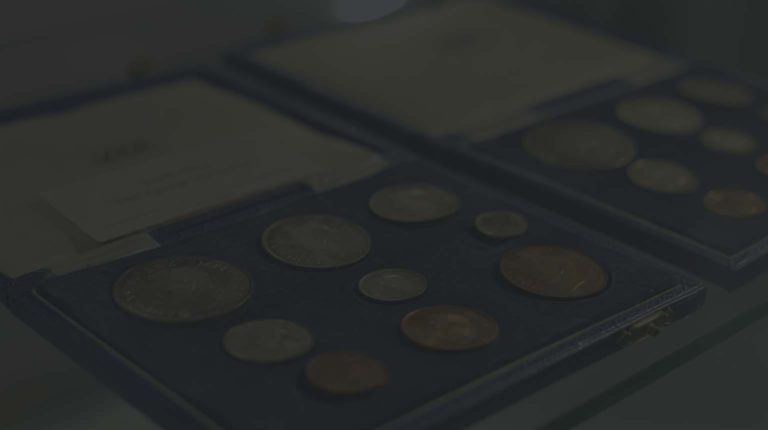
The 1st Century AD was one of Roman expansion and economic growth, and proved that the empire founded by Augustus would indeed succeed. Rome had, after all, been a Republic for centuries. Many were uncertain as to whether this new regime would survive the great emperor’s death. Yet despite the notoriously irresponsible emperors who succeeded Augustus, as well as a civil war in AD 68-69, the empire survived. By the 2nd Century the five ‘Good Emperors’ had overseen what is considered the golden age of the Roman Empire.
The 3rd Century, however, was very different. It was a period of turmoil now commonly known as the Crisis of the Third Century. The decades following the death of the emperor Severus Alexander (AD 222-235) at the hands of his own troops ushered in a period of ‘soldier emperors’. These leaders were proclaimed emperors by their soldiers, and their military might and subsequent marches on Rome usually led to them officially assuming the purple, by decree of the Senate. During the 3rd Century, over 25 emperors claimed legitimacy, many of them lasting less than a year.
This uncertainty led to massive economic challenges. Troops would demand more pay. By the 250s AD, the once-revered currency of the Roman Empire had been compromised. The silver denarius and its double-denomination, the antoninianus, had been debased over decades. From purity of around 85% pure silver during the middle of the 2nd Century AD, the silver coinage had been reduced to what was almost entirely base metal, due to a severe lack of bullion used for minting. The currency was rotting with the empire.

To make matters worse, plague ravaged the empire. The Plague of Cyprian (named after the Bishop of Carthage, Cyprian, who described the epidemic) ravaged the empire from around AD 249-262. Little is known of the exact illness which swept across the Roman world, but it is speculated that millions lost their lives.
Rome’s enemies wasted no time taking advantage of these troubles. By the reign of Valerian (AD 253-c. 260) Sassanian forces on the Eastern frontier were threatening Rome’s provinces in Asia Minor. Trouble was also brewing across the Danube and over the Rhine. Valerian and his army were defeated at the Battle of Edessa in AD 260. In what is considered one of the worst Roman military disasters, Valerian was actually captured in battle by the Persian king Shapur I – the first and only time in history that a Roman Emperor was captured in battle. This humiliation sent shockwaves across the crumbling empire. Valerian’s son, Gallienus, was left in sole command.
Across the empire, in Gaul, the military general Postumus was declared emperor by his troops. This was not unusual, given the context of the 3rd Century. Yet rather than march on Rome, the usurper Postumus decided to stay put. With the support of the army, Postumus’ newly formed ‘Gallic Empire’ also controlled Britannia (Britain) and Hispania (Spain). His own coins were issued, from various mints, in true Roman style. There are even suggestions that Postumus installed a Gallic Senate. The Gallic Empire was essentially a copy of the Roman Empire.
Postumus appears on his coins with a large beard. He seems to have styled himself on the demigod Hercules. On some very rare pieces he is depicted alongside the mythical hero. Commodus had associated himself closely with Hercules nearly a century earlier, but may have actually believed himself to be an incarnation of the demigod. Postumus appears to have used his association with Hercules as a power play, and to curry favour with his troops.

A certain coin of Postumus, however, raises some very interesting possibilities for the early years of the usurper’s reign. Salus, the Roman personification of health, cleanliness and sanitation, appears frequently on the coins of many emperors, and Postumus is no exception. Antoniniani of Postumus were struck celebrating the health of the imperial position (SALVS AVG) and the army (SALVS EXERC). Salus types were also issued depicting the Greek god of healing, Asclepius. Postumus, with his large beard, appears not unlike the deity.
It is a somewhat unimpressive looking antoninianus, however, which is the most fascinating. The significance of this coin (RIC 328) was noted by Elmer in his works on the coinage of the Gallic Empire. The reverse inscription of this particular type read ‘SALVS POSTVMI AVG’. This is unusual, as it specifically refers to the health of Postumus himself. It is not, however, unique. A coin with the inscription ‘SALVS ANTONINI AVG’ was issued during the reign of Elagabalus, which is considered a direct reference to that particular emperor’s health. Also curious is the depiction of Salus. She is pictured stepping upwards to the left, her trademark snake slithering upwards, and pointing at the usurper’s name.

It has been suggested that Postumus may have contracted a disease at some point during his reign, and that this coin, minted in c. AD 266, relates to that. Is it possible the coin was struck in an attempt to save the stricken ruler? Or was it minted to celebrate his recovery? Is it possible that Postumus contracted the same illness that had swooped through the empire? Since the coin was struck mere four years after the epidemic is said to have ended, it seems possible. Alternatively, the usurper may have suffered from a hitherto unknown health problem. These are all questions raised by this particular coin. In any case, since the coin was struck two years before Postumus’ death, it is safe to say that if sick, the usurper survived to rule his Gallic Empire for a further three years.
Postumus’ rule ended in AD 269. After quelling a revolt from inside his own domain, Postumus refused to allow his army to sack the city of Mainz. He was murdered by his own troops. The Gallic Empire would continue, ruled by various short-lived usurpers, for a further five years. It would be taken back by the emperor Aurelian – the emperor who is widely considered to have brought an end to the Crisis of the Third Century.

The Roman Empire, however, was never the same again. The mounting pressure of barbarian invasions and migrations, peasant rebellions and overall economic depression led larger cities to retreat into their walls, which will become a trademark of late antiquity. The growing instability caused a breakdown of internal trade networks and further clashes for the throne and power over the empire ensued.
Bibliography
- Manders, E (2012) Coining Images of Power. Leiden/Boston, Brill
- Marwood, M (1988) The Roman Cult of Salus. Oxford, BAR
- Drinkwater, J. F. (1987) The Gallic Empire. Stuttgart, Franz Steiner Verlag Wiesbaden GmbH
This article is written by Numismastist Dominic Chorney


